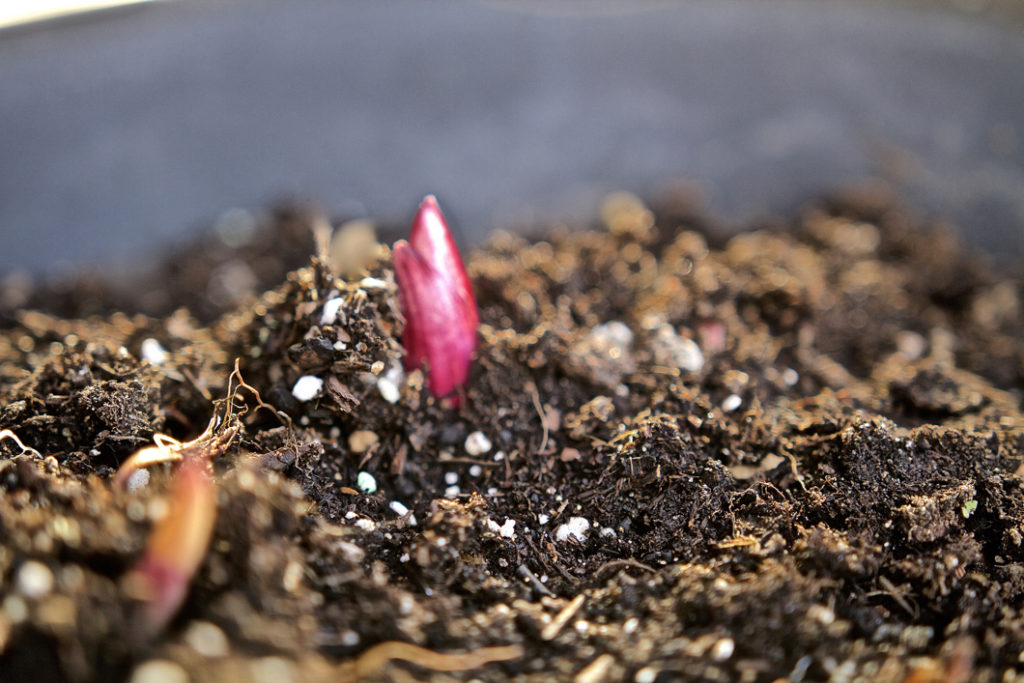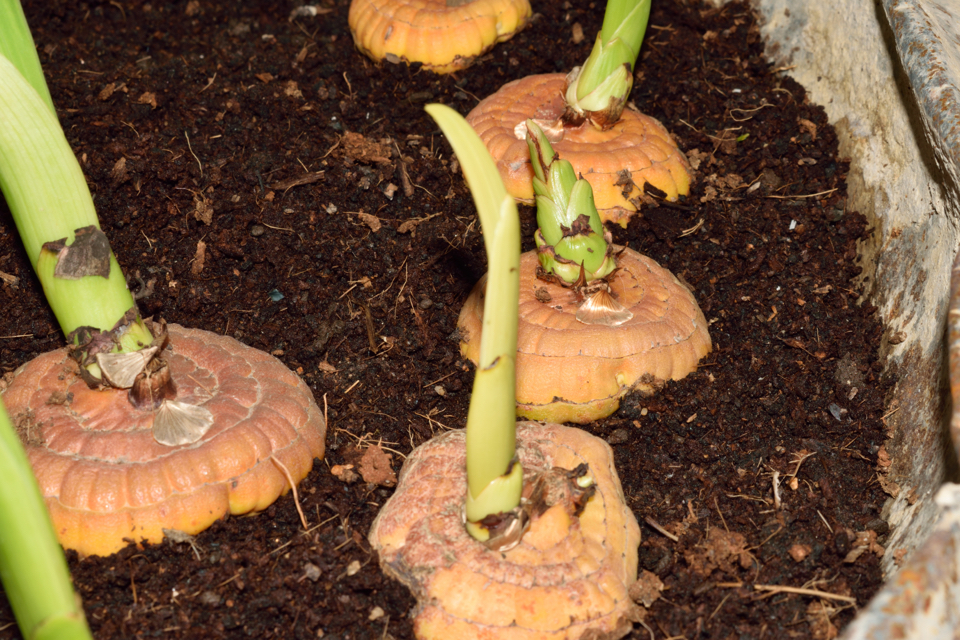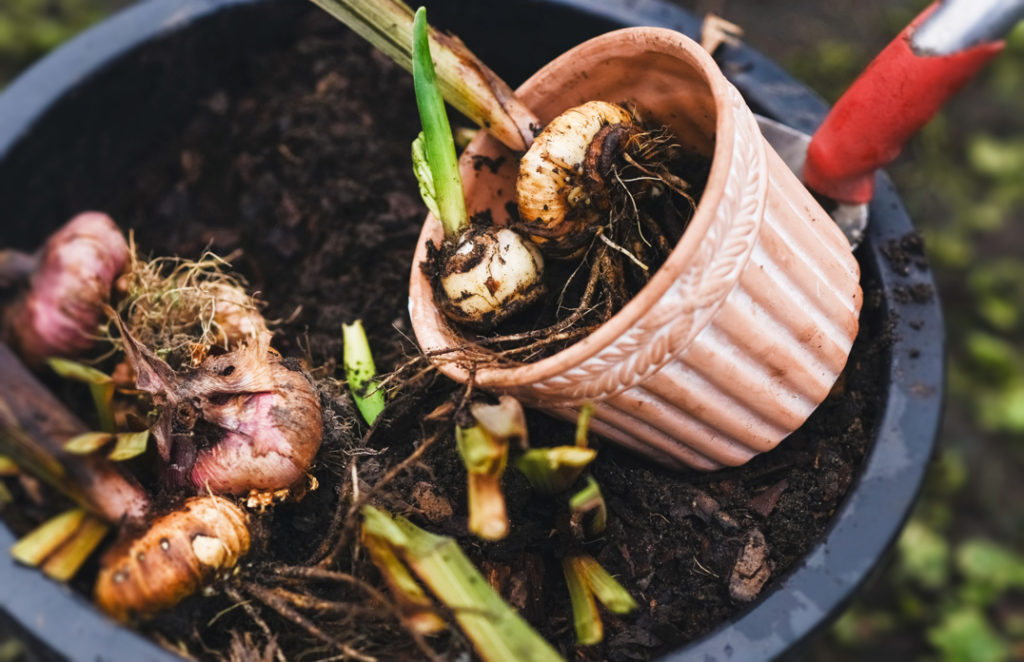Fred Miller On Growing Gladioli In Containers – ‘You Can Get 4–6 Corms In One Pot’

BULBS > GLADIOLUS > CONTAINERS
Reviewed By COLIN SKELLY

Colin is a Horticulturist and Horticultural Consultant with experience in a range of practical and managerial roles across heritage, commercial and public horticulture. He holds the Royal Horticultural Society’s Master of Horticulture award and has a particular interest in horticultural ecology and naturalistic planting for habitat and climate resilience.
Contributions From FRED MILLER

Fred Miller is a long-time member and Secretary of the Empire State Gladiolus Society with an affinity for gladioli and other bulbous plants.
IN THIS GUIDE
GLADIOLUS GUIDES
Container Growing
Growing From Seed
Overwintering
Planting
Pruning
There are so many reasons why you might grow your gladioli in containers.
You can do away with the hassle of digging up corms in open ground to overwinter them indoors by simply growing them in pots and moving them to a cool and dark basement or shed.
Also, as deciduous perennials, gladioli do not rapidly grow large root systems, so you won’t have to pot them on as you have to do with so many other plants.

You’ll just have to dig them up about once every 3 years to separate the corms.
Gladiolus flowers are truly sensuous, with their open-throat trumpet-shaped or funnel-shaped flowers that range in profusion right down the flower stalk.
As a result, many a variety will make a cracking accent plant on the doorstep or on the patio – another reason why you should consider container growing!
Choosing A Container
Compared to other plants of the same size, gladioli can be grown in relatively small pots.
But the size is still important, argues Fred Miller from the Empire State Gladiolus Society: “Be sure to pick a big enough pot, at least 12” (30cm) x 16” (41cm) deep.”
As they are not bushy plants, pots do not need to be very wide.

However, the pots you choose must have multiple drainage holes, as gladioli require excellent drainage, and, because damp soil is a no-no and breathability is important, clay or terra-cotta pots are the preferred options.
“I always grow Gladiolus in pots because I have a heavy soil, which causes corms to rot in winter,” explains Master Horticulturist Colin Skelly.
“I use a long tomato pot (narrow but deep) using John Innes 2 with some added grit.
“This provides plenty of nutrients and moisture-holding whilst also draining freely. In late winter or early spring, I harvest the corms and replant them with fresh compost to keep the corms from becoming overcrowded.”
“Be sure to have good drainage in the bottom,” echoes Fred.
How Many Gladioli Per Pot?
Gladioli are among the plants that play well among themselves, though they do not compete well for soil nutrients with many other plants.
Even though they certainly should not be overcrowded, gladioli’s tall and narrow form makes them amenable to sharing pots.
Fred explains: “You can get 4 – 6 corms in one pot, just spread them out. If you have chosen a tall variety, you may want to add support for them.
“This is best done at the time of planting so you do not disturb the roots.”
If unsure, try planting 3 medium-sized corms in a triangular arrangement in a pot of 30cm diameter, or you could grow 6 gladioli in a planter about 50cm wide.
Choosing A Growing Medium
Gladioli need fast and free-draining soil.
It’s important that the soil does not stay damp, so I suggest you start with a layer of gravel at the bottom of the pot.
These plants do best in fertile soil.

As such, a mix of clay-free sandy loam amended with organic compost will be very suitable.
High-quality potting soil amended with grit and/or perlite will prove equally good.
Finally, add a controlled-release balanced fertiliser to the soil, which will mean you will not have to fertilise the potted plants again.
Planting And Growing
Gladioli corms should be planted about 2 weeks before the last expected frost of the season.
As you will be growing these plants in pots, if you live in a mild region or if you can protect the pots from a snap frost, you can plant them even earlier.
The drop-shaped corms are to be planted with the tip upwards.

Water them well after planting so that the soil is soaked all the way through.
If you plant corms at intervals of 10-20 days, you will enjoy blooms all through the summer and even into early autumn, weather permitting.
Place the pots where they can get several hours of sun every day.
Also, be sure that the containers are in a sheltered spot, do not have northern exposure, and are protected from stiff winds.
Potting On Or Transplanting
Gladioli are not typically potted on or transplanted as the corms are usually planted in the location where you want to grow the plant.
Remember, you do not want to disturb the root system of any cormous (or bulbous) perennial during the growing season.

If you want to transfer your gladiolus to a different container or want to plant it in open ground, simply wait until mid-late autumn.
Then you can dig up the corm and the following season you can plant it in the desired spot.
Potted Gladioli Care
Water gladioli thoroughly and deeply about once a week, allowing the subsoil to just dry out between waterings.
If you did not add in slow-release fertiliser to the soil, then you can fertilise the plants with a high-potash liquid fertiliser.
Finally, these plants often require staking.

As the young plants are shooting up, especially if you see them struggling, use twine and a cane to keep them upright.
Push in the cane as early as possible so that you eliminate the risk of damaging young roots.
You can always tie the plants later.

